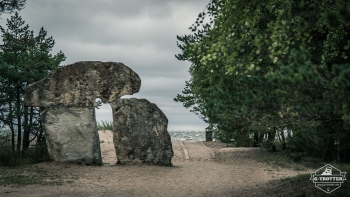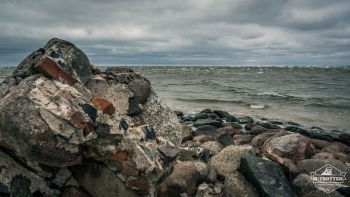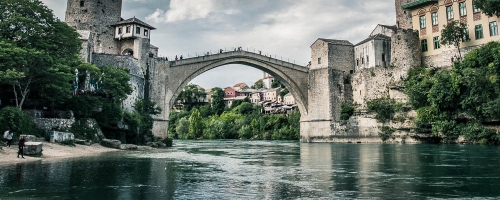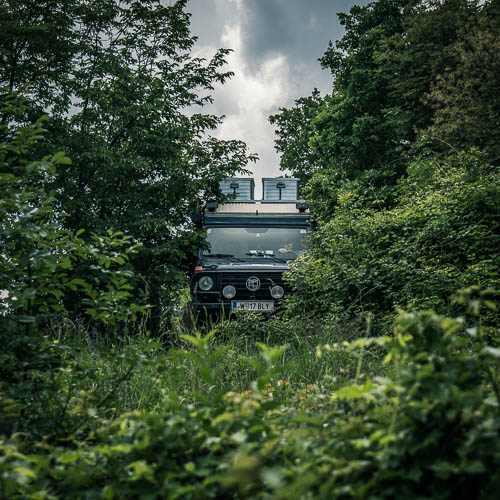
The underestimated magnificence of Latvia`s shore
Written by am on 26.01.2018 at 14:45.
In Latvia we traveled along its Baltic See coastline - starting from the popular seaside resort of Liepaja, passing the port city of Ventspils, we headed to Latvia`s capital city Riga.
Our trip through Latvia was accompanied by rain and strong gusts of wind. However, the weather did not prevent us from taking breaks in order to take a stroll on the sandy beaches to enjoy there the view of the raging sea.
If you ask people to close their eyes and imagine a white, fine-grained sandy beach, most would probably feel located somewhere “in the south". Hardly anyone suspects such small coastal paradises in a country like Latvia, which is trapped in Northern Europe between Lithuania and Estonia and which borders on the mighty Russia and unknown Belarus.
But in Latvia you will find them abundantly - lonely beaches, where the silence is interrupted only by the sloshing of the waves, the call of the seagulls and the chirping of crickets in the adjacent woods. In contrast to the overcrowded beaches in the south, there are no intrusive beach vendors or revellers, no ugly, monstrous hotel facilities block the view of the sea and thus spoil the coastal landscape.
Not gone with the wind
At Cape Kolka, where the Gulf of Riga and the open Baltic Sea clash, we observed the collision of the waves of the two seas on a long walk on the beach. We paid our respect to the brave kitesurfers, who floated weightlessly through the water and the air.
 A night in a former wine barrel.
A night in a former wine barrel.Since the wind was actually extraordinarily strong that day, we feared that the G`s open roof top would not withstand the gusts. More by chance than planned we came across an alternative accommodation option and decided to spare ourselves the opening of the roof and to not sleep in the G.
Instead, we spent a night in a former wine barrel, equipped only with a wooden platform, on which a mattress served as bed. The wooden barrel stood on a small cliff directly on the beach. The waves that night were so high that they lashed against the small window of the barrel. "Hopefully the barrel is well anchored" was my last thought before I fell asleep.
The next morning, the barrel was still in its place and the G parked next to it seemed to have well survived the night, despite getting a sea water shower. Hence, we could continue our ride in the still ongoing rain. Next stop: the Latvian capital city.
Riga`s belly
Every century has left its mark in Riga - in the capital of Latvia we strolled between medieval houses in the UNESCO-listed Old Town, gothic churches, guild houses built by merchants and unique examples of Art Nouveau. The buildings tell the story of yesteryear, while hip cafés, vegetarian-vegan restaurants, and small, colorful fashion stores reflect today's zeitgeist.
 The Central Market in Riga.
The Central Market in Riga.In Riga one could feel the modern age and, after a long Soviet past, its strong aspirations to the west. The Russian influence, however, we noticed when visiting the Central Market, also called "the belly of Riga". Here, where you can buy all sorts of trinkets seven days a week, we perceived a lot of spoken Russian.
In the impressive, large market halls, a wide range of fresh food was sold. We were fascinated by the meticulous division- in one hall only vegetables were sold, in the other only fish and in another only meat. We enjoyed the unique atmosphere in the halls, absorbed the different (not always good) smells and tasted some delicacies the market had to offer.
At the edge of the market area, we were irritated by the sight of elderly women, who sold tights, underwear and the like on the street - without having a stall and mostly directly out of their own handbags. As we later learned from a local, this is a familiar picture in Riga, as many elderly people live at subsistence level and try to earn some money by selling goods illegally.
Back to nature
As much fun as it is to explore a city, we always liked to swap urbanity for nature. A trip to the largest and oldest national park in Latvia offered a welcome change.
 Our campspot at the Gauja National Park.
Our campspot at the Gauja National Park.The Gauja National Park greeted us with sunshine and the prospect of a full day without rain (it should be the first time since we crossed the Latvian border) let us hope for a canoe trip on the river of the same name.
The weather lasted, but it was already off-season, and accordingly, all canoe tour providers were closed. Too bad, but in general we can say that traveling in the low season brings much more advantages than disadvantages. Several wonderful places on our trip would have been probably very crowded if we visited them in the peak season.
In the Gauja National Park we discovered a quiet spot next to the banks of a small stream, surrounded by chilly, dark forests. We were pleased that the weather god was well-disposed towards us and that we could spark a campfire on our last evening in Latvia. The accompanying food was anyway always within reach in our cool box.



























